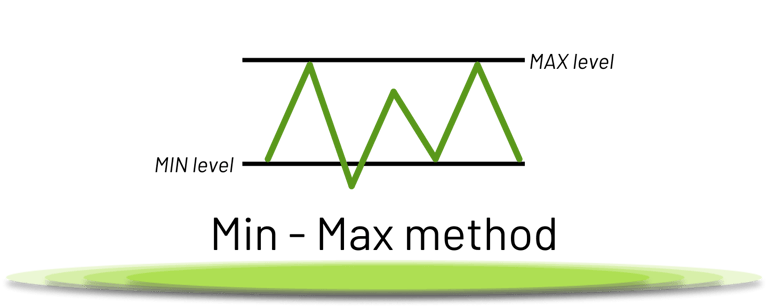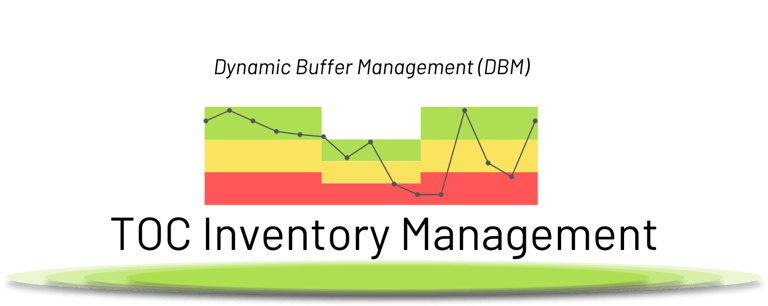Comparing Inventory Management Methods: Min-Max vs. Sales Forecasting vs. TOC
Table of Contents
Efficient inventory management plays a significant role in the success of any business, particularly for small and medium-sized companies. Managing inventory is a financial investment, and with limited resources, companies must carefully balance customer demand while avoiding excess stock. Finding the right method is important to optimize operations and minimize the risk of tying up capital in slow-moving inventory.
In this article, we'll explore three popular inventory management methods: Min-Max, Sales Forecasting, and the Theory of Constraints (TOC). We will examine their principles, advantages, and challenges. Understanding these methods will help inventory managers make informed decisions and tailor their approach to meet their business needs.
Understanding the Min-Max Inventory Method
What is the Min-Max Method?
The Min-Max method is a traditional approach to inventory control. It involves setting predefined minimum (reorder point) and maximum (stock cap) levels for each product. When the stock of an item falls below the minimum threshold, an order is triggered to replenish the inventory back to the maximum level.
Core Principles of Min-Max
Minimum Stock Level: The minimum level ensures stock is replenished before it runs out, allowing for lead time in ordering and receiving products.
Maximum Stock Level: The upper limit prevents overstocking and ensures that the business doesn't hold more inventory than necessary, reducing unnecessary storage costs and capital investment.
Advantages of Min-Max
Simplicity: Easy to implement and understand, making it accessible to businesses with limited resources.
Reduces Stockouts: Ensures stock is always available, reducing the risk of lost sales.
Prevents Overstocking: Helps avoid excessive inventory, freeing up cash flow.
Challenges of Min-Max
Static Nature: Min-Max levels are fixed and may not adapt to sudden demand changes, leading to stockouts or overstocking.
Requires Regular Review: To remain effective, Min-Max levels need to be regularly reviewed and adjusted based on sales trends and supplier lead times.


Sales Forecasting in Inventory Management
What is Sales Forecasting?
Sales forecasting is a predictive method that estimates future demand based on historical data, market trends, and other factors. It helps businesses plan more accurately for future demand, ensuring they have the right stock on hand.
Advantages of Sales Forecasting
Improves Demand Planning: Helps businesses anticipate demand fluctuations and adjust inventory accordingly.
Informs Procurement: Provides accurate data for purchasing decisions, reducing costs and ensuring stock availability.
Supports Financial Planning: Helps predict revenue and plan for future investments.
Challenges of Sales Forecasting
Data-Dependent: Forecasting accuracy relies on high-quality historical data, and poor data can result in incorrect forecasts.
Market Changes: Unforeseen changes in consumer behavior or supply chain disruptions can render forecasts ineffective.


Theory of Constraints (TOC) in Inventory Management
What is TOC in Inventory Management?
TOC is a method focused on maintaining an optimal flow of goods through the supply chain by using dynamic buffer management. It ensures that stock levels are sufficient to meet demand without holding excessive inventory.
How Does TOC Work?
Dynamic Buffer Management (DBM):
TOC uses dynamic buffer management to optimize stock levels. Buffers are adjusted daily based on consumption trends. If demand increases, the buffer increases to prevent stockouts; if demand decreases, the buffer is reduced to avoid overstocking.
Advantages of TOC
Reduces Overstock and Stockouts: Ensures businesses maintain just enough inventory.
Improves Cash Flow: Minimizes excess stock, freeing up capital.
Enhances Flexibility: Adapts quickly to changes in demand and supply.
Challenges of TOC
Ongoing Monitoring Required: TOC requires daily auditing of stock levels and buffers, which can be resource-intensive for some businesses.
Complexity: Implementing TOC can be complex, particularly for businesses with intricate supply chains. It demands more analysis and ongoing adjustments compared to other methods.


Supply Lead Time:
Lead time affects the size of the buffer in TOC. Shorter lead times allow for smaller buffers, while longer lead times require larger buffers to ensure sufficient stock during replenishment delays.
Buffer Zones:
Red Zone: Signals low inventory, triggering urgent replenishment and stock level increase.
Yellow Zone: Represents optimal stock levels.
Green Zone: Indicates stock levels are safe but should be monitored to prevent overstocking.
Smart Decision-Making Based on Circumstances
All three inventory management methods Min-Max, Sales Forecasting, and TOC aim to help businesses meet customer demand while optimizing inventory levels. The key is to minimize stockouts (which lead to lost sales) and overstocking (which tie up capital). While these methods differ in calculating the most effective stock levels, the goal is the same: balancing availability with cost efficiency.
Min-Max focuses on maintaining stock between the set minimum and maximum levels, but it may not adapt quickly to sudden changes in demand.
Sales Forecasting uses historical data and market analysis to predict future demand. It works well when past trends align with future expectations but can fall short in volatile markets.
TOC uses dynamic buffer management, adjusting stock levels daily based on actual consumption and supply lead time, making it more flexible in responding to demand fluctuations.
Choosing the Right Inventory Management Method for Your Business
Breaking Down Inventory Management for Different Situations
Businesses often face a wide range of scenarios, especially when managing a large assortment of SKUs. Some products have stable demand and reliable suppliers, while others are seasonal, have short shelf lives, or come with long supply lead times. Additionally, demand fluctuations and unreliable suppliers further complicate inventory management.
In most cases, there is no one-size-fits-all solution for inventory management. It requires adapting to specific product categories and their circumstances, such as supplier reliability. For instance, when consumption is stable and the supplier is reliable, any of the three methods Min-Max, Sales Forecasting, or TOC could work effectively.
However, the key differences lie in the details. In the Min-Max method, for example, you might set maximum stock levels based on warehouse space or average monthly sales. A typical metric is SKU turnover in days (e.g., 30-day turnover), where you aim to maintain 30 days' worth of stock. On the other hand, TOC offers dynamic stock level management, which may allow you to reduce turnover days and store less inventory at a time.
Handling Significant Sales Fluctuations
What to do when sales fluctuate significantly? Sales Forecasting relies heavily on historical data, which can work well if trends are consistent. For example, you might use last year's data and plan for a 20% increase in sales due to market changes. However, this approach involves some guesswork and assumes that past trends will repeat.
Min-Max may struggle in these conditions since it's not designed to quickly adapt to rapid changes in demand. TOC, with its dynamic buffer management, would be a more effective option for responding to demand changes in real-time, making it the better choice in cases of fluctuating sales.
Dealing with Unreliable Suppliers
Unreliable suppliers add another layer of complexity. How do you prevent stockouts if a supplier delivers late? One solution is to incorporate safety stock into any inventory management method, which acts as a buffer for "what-if" scenarios. When using historical data (as in Min-Max or Sales Forecasting), it's important to consider whether supplier delays are reflected in your data. Is the delay a one-time issue or a recurring problem? If it's reflected in the historical data, do you still need a safety buffer?
TOC handles this well because its buffer management system is based on current consumption rather than relying solely on historical data. If a stockout occurs due to supplier failure, TOC will automatically increase the buffer to prevent future stockouts.
Managing Seasonal Goods
Seasonal goods present another challenge. If a product can only be supplied once per season, you won't have the option to refill stock mid-season. In this case, Sales Forecasting is typically the best choice. You can use historical data and market trends to estimate how much stock you'll need for the season. Similarly, for promotions with no refills, Sales Forecasting helps ensure you have enough stock without overshooting demand.
Managing inventory efficiently is no easy task. Companies face various situations, and in this article, we've only discussed a few factors that impact consumption. Before selecting an inventory management method, it's important to analyze all the patterns, conditions, and partners you're working with.
Remember that Sales Forecasting and Min-Max methods are based on historical data. When real-time conditions deviate from expectations, these methods may fall short. This is where TOC stands out, as it adapts dynamically to real-time changes in demand and supply lead times.
That said, no single method is perfect for all situations. In some cases, combining different methods may provide the best results. Flexibility and adaptability are essential for successful inventory management.
The fluentSTOCK tool was created and developed based on the Theory of Constraints (TOC), as this theory offers a broad approach to inventory management and business processes in general. In our long-term experience, this theory leads to the best possible results when implemented correctly.
If you have any questions about how the fluentSTOCK tool solves or manages specific inventory management situations in your business, please feel free to contact us for further discussion.


